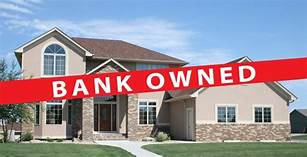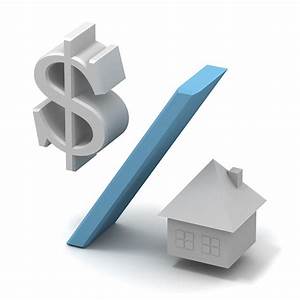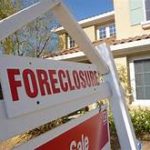OTHER NEWS
Foreclosure Filings Approach 13-Year Low
- Thursday, 11 October 2018
- Lending

Foreclosure filings have declined to their lowest level in 13 years, almost setting a new 13-year low.
The number of properties that received foreclosure filings--default notices, scheduled auctions or bank repossessions—fell to 177, 146 properties in the third quarter of 2018, a decline of six percent, according to the most recent U.S. Foreclosure Market Report from Attom Data Solutions. Compared with the same period a year earlier, foreclosures declined eight percent to their lowest level since the fourth quarter of 2005.
"The biggest foreclosure risk in today's housing market comes from natural disaster events such as the twin hurricanes of a year ago,” said Daren Blomquist, senior vice president at ATTOM Data Solutions. “Foreclosure starts spiked in the third quarter in many local markets impacted by those hurricanes. Second, we are seeing relatively modest, but more widespread, foreclosure risk associated with Federal Housing Administration loans originated in 2014 and 2015."
For the eighth consecutive quarter foreclosure activity was lower than the pre-recession average. In Q3 foreclosure activity 36 percent below the pre-recession average of 278,912 properties registered between Q12006-Q3 2007.
"A decade after poorly underwritten mortgages triggered a housing market crash, it's clear that the foreclosure risk associated with those problem mortgages has faded—average foreclosure timelines have dropped to a two-year low, and the share of foreclosures tied to 2004-to-2008 loans has dropped well below 50 percent," said Blomquist.
(The chart below illustrates the states where a foreclosure takes the most days, on average, to complete. Hawaii requires an average of 1,491 days to complete a foreclose, more than twice the national average.)
Foreclosure starts down nationwide, up in 36 percent of local markets
Lenders started the foreclosure process on 91,849 properties in Q3 2018, down six percent from the previous quarter. The performance represents a decline of 3 percent from a year ago—the 13th consecutive quarter with a year-over-year decrease in foreclosure starts.
Counter to the national trend, 15 states posted year-over-year increases in foreclosure starts in Q3 2018, including Florida (up 25 percent); Texas (up 3 percent); Maryland (up 13 percent); Michigan (up 32 percent); and Missouri (up 10 percent).
In contrast to the national trend, 79 of 219 metropolitan statistical areas analyzed in the report (36 percent) posted a year-over-year increase in foreclosure starts in Q3 2018, including Los Angeles, California (up 2 percent); Houston, Texas (up 51 percent); Washington, D.C. (up 2 percent); Miami, Florida (up 29 percent); and Detroit, Michigan (up 65 percent).
Other markets with at least 1 million people and a year-over-year increase of at least 15 percent in foreclosure starts in Q3 2018 were Minneapolis-St. Paul, Minnesota; Tampa-St. Petersburg, Florida; St. Louis, Missouri; Orlando, Florida; Las Vegas, Nevada; Austin, Texas, Milwaukee, Wisconsin; Jacksonville, Florida; and Grand Rapids, Wyoming.
Although overall performance was good, there were some underperforming results.
FHA foreclosure rates for 2014 and 2015 vintages above long-term average
FHA foreclosure rates for 2014 and 2015 loan vintages registered above the long-term average foreclosure rate for FHA loans, the only two post-recession vintages (2010 and later) above the long-term average.
FHA loans originated in 2014 had the highest foreclosure rate of any post-recession loan vintage nationwide, as well as in 31 states and in 63 of 115 metropolitan statistical areas analyzed (55 percent), including New York, Chicago, Dallas-Fort Worth, Philadelphia and Houston.
FHA loans originated in 2015 had the highest foreclosure rate of any post-recession loan vintage in 10 states and in 21 of 115 metropolitan statistical areas analyzed (18 percent), including Atlanta, Miami, San Antonio, Oklahoma City and Memphis.
Highest foreclosure rates in New Jersey, Delaware, Maryland
Nationwide one in every 757 properties had a foreclosure filing in Q3 2018. States with the highest foreclosure rates in Q3 2018 were New Jersey (one in every 267 housing units with a foreclosure filing); Delaware (one in every 315); Maryland (one in every 379); Florida (one in every 449); and Nevada (one in every 472).
Among 219 metropolitan statistical areas analyzed in the report, those with the highest foreclosure rates in Q3 2018 were Atlantic City, New Jersey (one in every 152 housing units with a foreclosure filing); Trenton, New Jersey (one in every 236); Fayetteville, North Carolina (one in every 253); Peoria, Illinois (one in every 299); and Philadelphia, Pennsylvania (one in every 326).
Bank repossessions drop to record low nationwide, but Increased in 17 states
Lenders repossessed 51,459 properties through foreclosure, or real estate owned, in Q3 2018, down 24 percent from the previous quarter and down 8 percent from a year ago to the lowest level since Attom began tracking in the second quarter 2005.
Bucking the national trend, the Washington, D.C. and 17 states posted year-over-year increases in real estate owned activity in Q3 2018, including New Jersey (up 4 percent); Texas (up 21 percent); New York (up 3 percent); Georgia (up 56 percent); and Missouri (up 27 percent).
Average time to foreclose drops to two-year low
Properties foreclosed in Q3 2018 had been in the foreclosure process an average of 713 days, a decline of seven days compared with Q2. That’s down from 899 days in Q3 2017, and the lowest level since Q2 2016— a two-year low.
States with the longest average foreclosure timelines for homes foreclosed in Q3 2018 were Hawaii (1,491 days); Indiana (1,295 days); Florida (1,177 days); Utah (1,170 days); New Jersey (1,137 days); and New York (1,092 days).
States with the shortest average foreclosure timelines for homes foreclosed in Q3 2018 were Virginia (179 days); Mississippi (209 days); New Hampshire (216 days); Alaska (237 days); and Nebraska (240 days).
Read more...
Yourhome1source-Aboutmymortgage.com Form Alliance
- Wednesday, 10 October 2018
- Lending

Yourhome1source and Aboutmymortgage.com have created an alliance designed to ensure that borrowers have the information they need to make well-informed mortgage decisions.
On YourHome1Source.com borrowers will now have expedited access to information about their existing mortgage, so they can make an informed decision about a potential refinance, home equity loan or a new mortgage. Your Home Digital LLC developed YourHome1Source.com as an educational resource to consumers.
"Providing homeowners with convenient access to financing options and time-saving processes, only available through their existing loan servicer via aboutMYmortgage.com, puts another powerful tool in their hands, so they will make the best decision about their home financing needs," said Sean Stockell, CEO of Your Home Digital, LLC.
"We are proud to partner with such a progressive homeowner resource portal as YourHome1Source.com and excited to assist homeowners gather objective and critical information about their current mortgage that's only available from their current loan servicer," said Tim Allen, CEO and founder of  Aboutmymortgage.com. "Our vision is that one day all borrowers who are considering financing will be provided an opportunity to discuss financing solutions with their current mortgage servicer. And most importantly, this service is free to homeowners."
Aboutmymortgage.com. "Our vision is that one day all borrowers who are considering financing will be provided an opportunity to discuss financing solutions with their current mortgage servicer. And most importantly, this service is free to homeowners."
The alliance makes it easy for borrowers to work with participating servicers. Homeowners gain access to the information necessary to review an existing mortgage loan, educate loan customers about financing options and create mutually beneficial outcomes. Mortgage servicers benefit by retaining valuable customer relationships over the long term.
Earlier in October, Aboutmymortgage.com and Hope Loan Port began working together to assist homeowners with mortgage questions and provide them with help resolving mortgage delinquencies.
Aboutmymortgage.com will refer homeowners who may need a loan modification to Hope LoanPort for assistance. Aboutmymortgage.com provides a direct link from its loan modification landing page to Hope Loan Port's Homeowner Connect website, where a homeowner can get advice from a nonprofit housing counselor and submit a foreclosure alternative package directly to their mortgage servicer. The aim is to ensure consumers understand their options and work with their servicer to get the help they need.
Since 2009, the Hope Loan Port has become a go-to technology platform for national mortgage assistance programs and has been used by the top-six commercial banks, Fannie Mae, Freddie Mac, the nation's largest servicers as well as over 1,100 counseling agencies to help more than 700,000 families achieve and sustain homeownership.
Read more...US Mortgage Foreclosure Rate Drops to a 12-Year July Low, Notes Survey
- Tuesday, 09 October 2018
- Lending

The foreclosure inventory rate for July was at the lowest level in more than a decade.
The foreclosure inventory rate for July 2018 hit 0.5 percent, down 0.2 percent compared with the same period a year earlier, and marking a 12-year low in the statistic, according to the Loan Performance Insights Report from CoreLogic.
The July 2018 foreclosure inventory rate, which measures the share of mortgages in some stage of the foreclosure process, remained unchanged from April, May and June of this year.
[caption id="attachment_6706" align="alignleft" width="150"] The news on foreclosures was good.[/caption]
The news on foreclosures was good.[/caption]
The report shows that, nationally, 4.1 percent of mortgages were in some stage of delinquency (30 days or more past due, including those in foreclosure) in July 2018, representing a 0.6 percentage point decline in the overall delinquency rate compared with July 2017, when it was 4.7 percent.
Measuring early-stage delinquency rates is important for analyzing the health of the mortgage market. To monitor mortgage performance, CoreLogic examines the stages of delinquency and transition rates, which indicate the percentage of mortgages moving from one stage of delinquency to the next. The stages include the following:
- The rate for early-stage delinquencies, or 30 to 59 days past due, was 1.9 percent in July 2018, a decline from 2.1 percent in July 2017.
- The percentage of mortgages that were 60 to 89 days past due in July 2018 was 0.6 percent, down from 0.7 percent in July 2017.
- The serious delinquency rate, or 90 days or more past due, including loans in foreclosure, was 1.6 percent in July 2018, down from 1.9 percent in July 2017. It’s the lowest for July since 2006 when it was 1.4 percent and the lowest for any month since June 2007, when it was also 1.6 percent.
Since early-stage delinquencies can be volatile, CoreLogic also analyzes transition rates. The share of mortgages that transitioned from current to 30 days past due was 0.8 percent in July 2018, down from 0.9 percent in July 2017. By comparison, in January 2007, just before the start of the financial crisis, the current-to-30-day transition rate was 1.2 percent, while it peaked in November 2008 at 2 percent.
“With the national unemployment rate remaining below 4 percent since July, further declines in U.S. delinquency rates are likely in coming months,” said Dr. Frank Nothaft, chief economist for CoreLogic. “The exception will be in local areas impacted by natural hazards or a rise in unemployment. The destruction of homes and disruption to local commerce caused by natural disasters lead to a subsequent spike in local delinquency rates, even for homes that were untouched.”
While no state posted year-over-year increases in their 30-plus-day delinquency in July 2018, several metropolitan areas in Florida and Texas recorded month-over-month increases. This indicates properties in North Carolina, South Carolina and Virginia that recently experienced damage from Hurricane Florence may be at risk for early-stage delinquency. CoreLogic identified thousands of homes in these states that were affected by wind and water damage from the storm.
“We expect higher delinquency rates in the mid-Atlantic region later this year due to Hurricane Florence, which impacted almost 500,000 homes in North Carolina alone. We also see increases in serious delinquency rates in Florida and Texas reflecting the damage of Hurricanes Harvey and Irma,” said Frank Martell, president and CEO of CoreLogic. “In addition, Hawaii will likely experience an increase in delinquency rates as a result of Hurricane Lane and the eruption of Kilauea.”
Read more...
Perp Walk Friday: New Jersey Man Pleads Guilty of Mortgage, Real Estate Fraud
- Friday, 05 October 2018
- Lending

 A New Jersey man pled guilty to charges that he conspired to defraud financially distressed homeowners, investors, and financial institutions of fees and income from mortgage and real estate transactions.
A New Jersey man pled guilty to charges that he conspired to defraud financially distressed homeowners, investors, and financial institutions of fees and income from mortgage and real estate transactions.
Hasan Hussain, 57, of Princeton, N.J., pled guilty to charges that he conspired to defraud them of rental income, mortgage payment funds, property ownership and proceeds from the sale of their properties. Also, he pled guilty to aggravated identity theft in connection with the fraud. Hussain had already been convicted in federal court in Massachusetts and incarcerated for masterminding a real estate fraud.
At sentencing on Jan. 8, 2018, Hussain faces up to 32 years in federal prison, five years of supervised release, and a fine of $1,250,000. A co-defendant in this matter, Ricardo Abreu, who pled guilty earlier this year, is scheduled to be sentenced on Oct. 30, 2018.
Hussain’s guilty plea was made before U.S. District Court Judge John J. McConnell Jr., and the case is being prosecuted by Assistant U.S. Attorneys Sandra R. Hebert, Richard B. Myrus, and William J. Ferland. Citing Department of Justice policy governing ongoing cases, Jim Martin, media relations for the department, declined The Mortgage Leader’s request for an interview.
Hussain admitted he used several business entities to trick distressed property owners, who were seeking loan modifications, into paying him fees, moving out of their homes, and then he sold their homes in short-sale transactions. As part of the plea, Hussain further admitted that he convinced lenders to agree to artificially low sale prices for the distressed property owners’ homes by having other individuals damage the properties prior to the short sales.
As a result, Hussain or individuals or businesses associated with him, acquired the properties at reduced prices, flipping them to investors at much higher prices. During his change of plea, Hussain admitted that these investors were defrauded of their funds, or good credit, or both when they agreed to purchase properties from Hussain.
Hussain further admitted that he assisted investors to acquire federally backed mortgages through fraudulent applications, which resulted in losses to the lenders or the Federal Housing Administration. Some of the tactics employed by Hussain as part of the scheme included misuse of identities and cutting and pasting signatures on property deeds and financial documents.
As part of his plea agreement, Hussain admitted that his scheme resulted in losses between $550,000 and $1.5 million dollars; that 10 or more victims were harmed; and that at least some of his victims were particularly vulnerable, as a result of their personal situation.
Read more...
